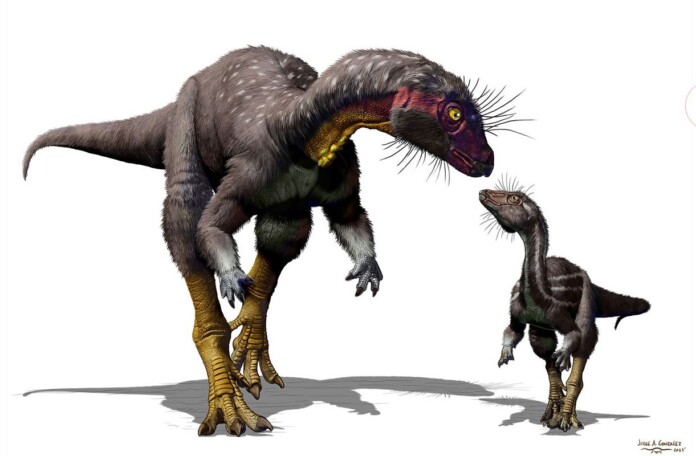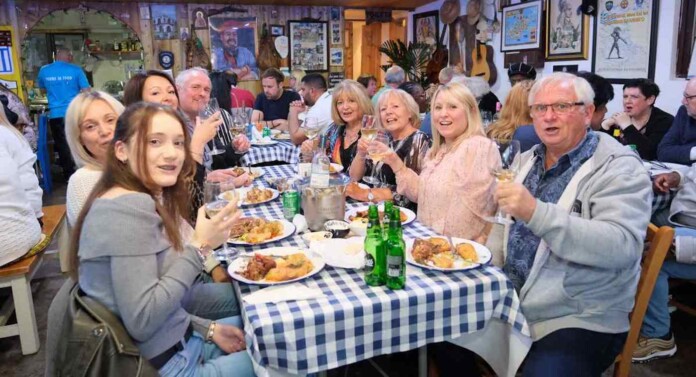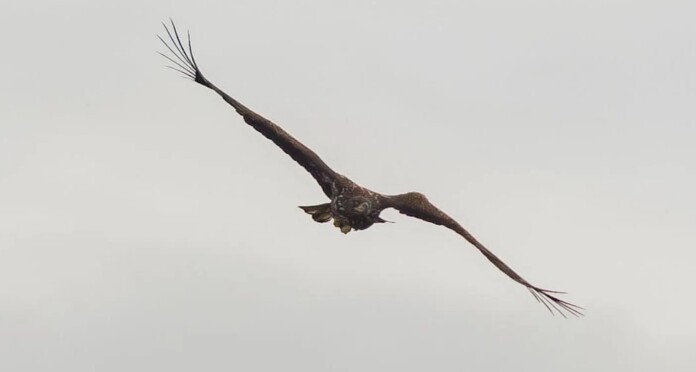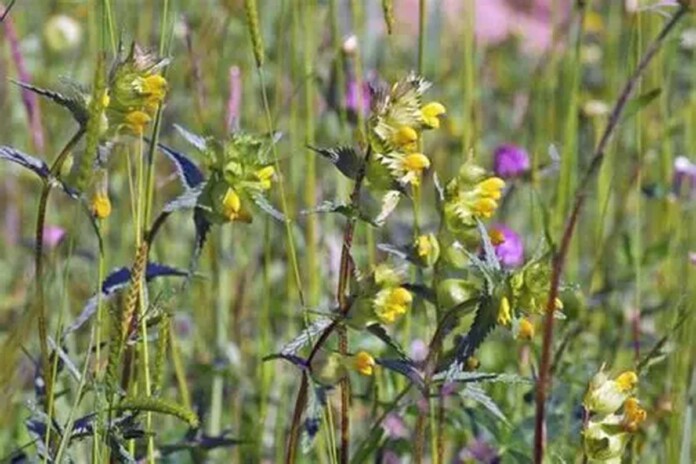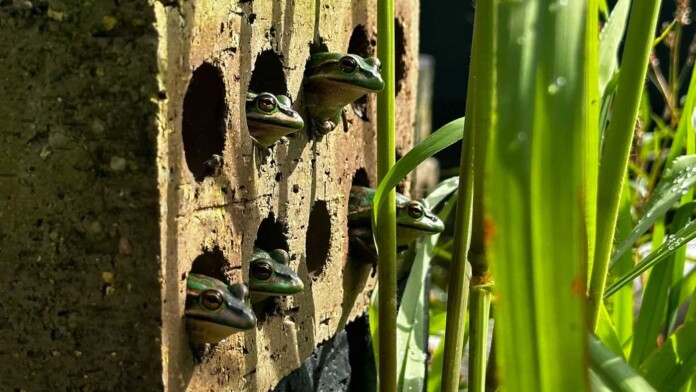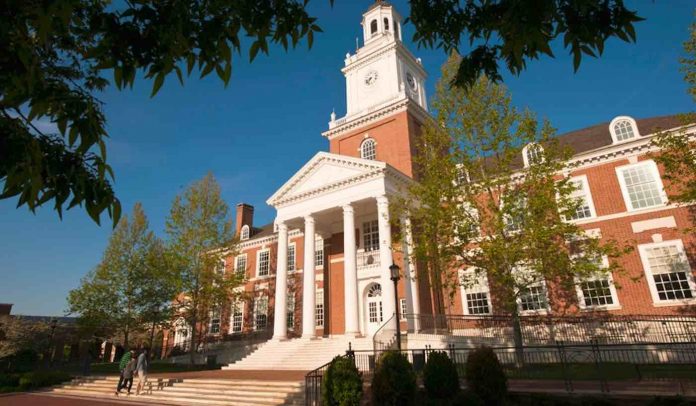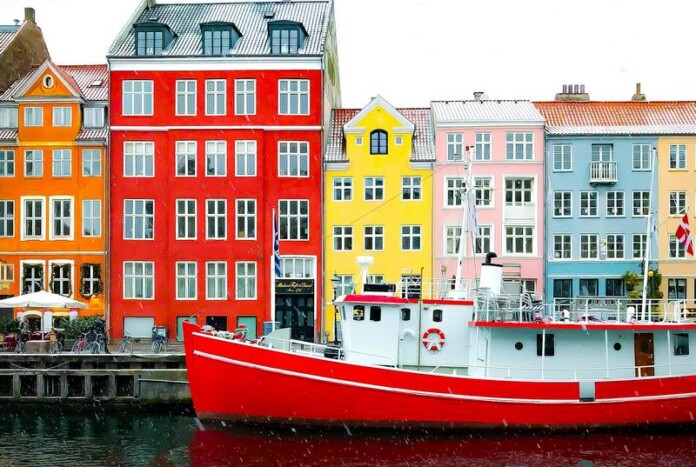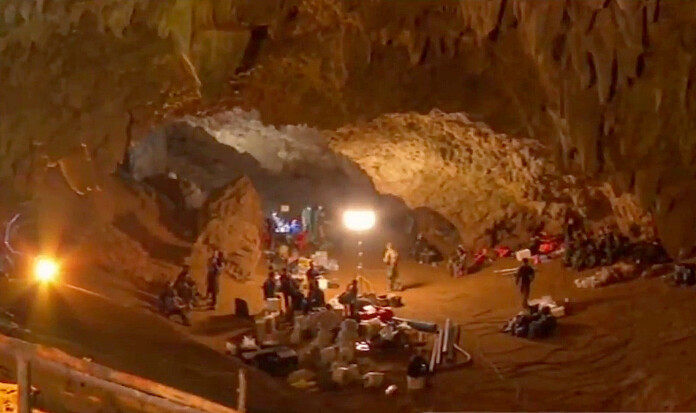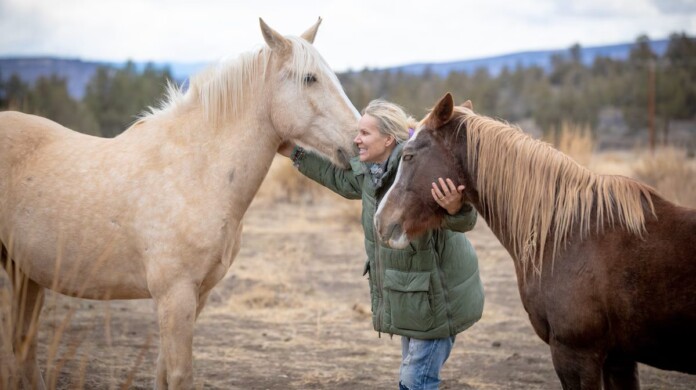On this day 231 years ago, John Clare, the “peasant poet” was born. Living his whole life in the countryside of Northamptonshire, he was a poet of natural England, the son of a farmer, and the husband to a milkmaid. He started composing poetry after reading James Thomsen’s The Seasons, and sold them as a way to prevent the slow-motion eviction of his father from their farm. READ some of his work… (1793)
A Burrowing Dinosaur? More Evidence from Utah Suggests that Some Dinos Were Happier Underground
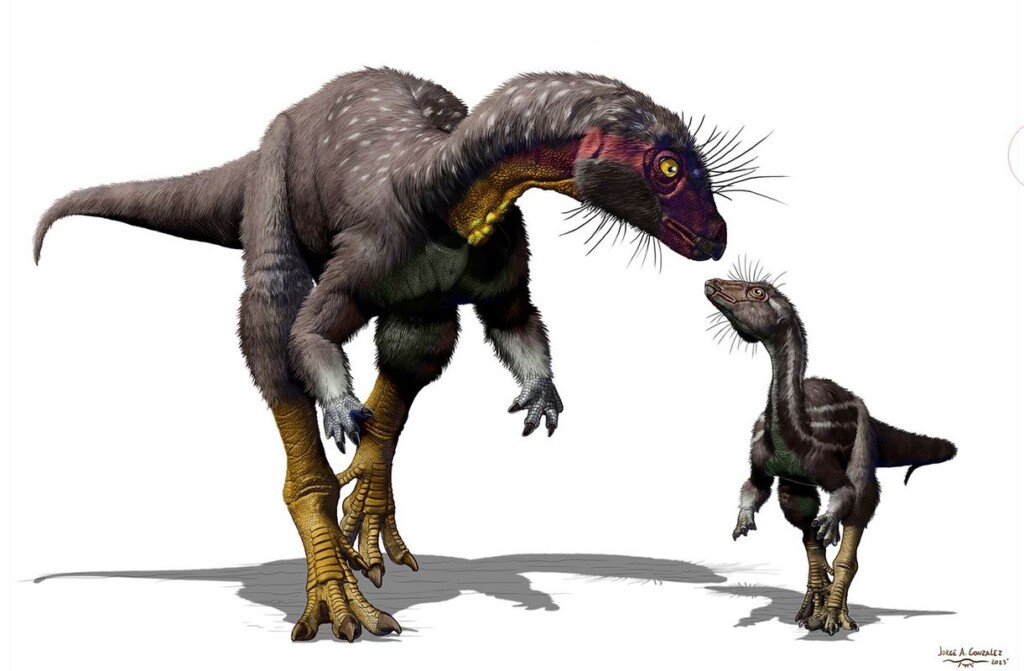
Paleontologists recently identified a dinosaur that is believed to have lived at least partially underground—demonstrating that dinosaurs successfully exploited every kind of habitat available to them.
Fona herzogae lived 99 million years ago and possesses a skeleton that bears many hallmarks of animals that burrow.
Discovered in Utah by paleontologists from North Carolina State University and the North Carolina Museum of Natural Sciences, it was a rather simple, unornamented dinosaur about as big as an average-sized dog.
Examinations of several close-to-complete skeletons show that F. herzogae possessed large bicep muscles, fused bones along the pelvis, and strong muscle attachment points on the hips and legs: all signs of a burrowing lifestyle.
Where it was discovered in Utah was, at the time of the animal’s life, a flood plain called Mussentichit that formed along the edges of a massive inland sea to the east, and peaks and volcanoes to the west. It was warm, it was humid, and it was riverine.
“The bias in the fossil record is toward bigger animals, primarily because in floodplain environments like the Mussentuchit, small bones on the surface will often scatter, rot away, or become scavenged before burial and fossilization,” says Haviv Avrahami, a Ph.D. student at NC State and first author on the paper describing the dino.
“But Fona is often found complete, with many of its bones preserved in the original death pose, chest down with splayed forelimbs, and in exceptionally good condition,” Avrahami says. “If it had already been underground in a burrow before death, it would have made this type of preservation more likely.”
“Fona skeletons are way more common in this area than we would predict for a small animal with fragile bones,” adds Lindsay Zanno, head of paleontology at the North Carolina Museum of Natural Sciences and corresponding author of the work.
OTHER SURPRISING DINOSAURS: At Long Last, Paleontologists Find Remains of a Swimming Dinosaur—’a Cretaceous Cormorant’
“The best explanation for why we find so many of them, and recover them in small bundles of multiple individuals, is that they were living at least part of the time underground. Essentially, Fona did the hard work for us, by burying itself all over this area.”
F. herzogae is not the first dinosaur to be found in these conditions and with these adaptations. Oryctodromeus, which was first reported as a digger in 2007, demonstrates many of the same clues, including bicep size and the consistency of skeletal fossilization.
Also shared between the two is their paleohabitat. Although no Fona burrows have been found, those of Oryctodromeus have been identified in nearby Idaho and Montana, suggesting that Fona too was a burrower.
YOU MAY ALSO LIKE: Pony-Sized Dinosaurs Swam or Floated Across Hundreds of Miles of Ocean from America to Colonize Africa
Securing more evidence of subterranean living in dinosaurs essentially confirms that the clade expanded into every single habitat available to them on land, including freshwater, treetops, and the underground.
“People tend to have a myopic view of dinosaurs that hasn’t kept up with the science,” Zanno says. “We now know that dinosaur diversity ran the gamut from tiny arboreal gliders and nocturnal hunters, to sloth-like grazers, and yes, even subterranean shelterers.”
SHARE This Amazing Discovery That
Dad Attracts Diners from Across the Globe After Building $22k Greek Taverna–in His Backyard
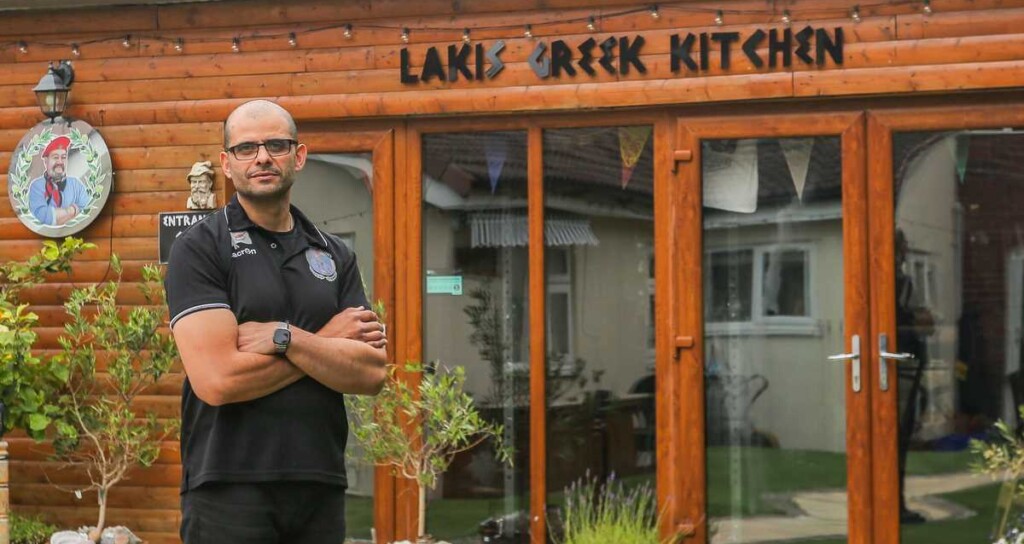
Mr. Panikos Panayiotou is attracting diners from all over the world after the restaurant he built in his backyard became a local hotspot.
Forking out tens of thousands to bring a slice of the Mediterranean to the industrial heartlands of Walsall, England, all the net proceeds from his delicious Greek menu go to charity.
It’s called the Lakis Greek Taverna, and despite sitting literally in the 44-year-old’s yard, it’s fully compliant with restaurant regulations.
They are now attracting visitors from as far away as the USA and are typically booked two months in advance, serving around 200 customers per night.
“Luckily the neighbors don’t mind, they are fantastic on both sides,” Panayiotou explains. “We usually do a street lunch for the locals. They’re great and they love that we’re raising for local causes. We’ve got a lot of support from our local area.”
Panikos decided to construct his 861-square-foot restaurant in memory of his late father Lakis who died from small-cell lung cancer in 2012.
Lakis, who owned a fish and chip shop, had started to build his own taverna at his village in Cyprus but passed away before it could be completed. Panayiotou said he wanted to honor his dad’s memory by finishing the job he had started—all while raising money for good causes.
The taverna took two months to build with the help of his wife Michelle and volunteers, and since 2014 he has raised ($82,000) £64,000 for local charities such as Acorns Children’s Hospice and helping the homeless.
“Our traditions are to have a relationship with your loved ones in the afterlife, so you do good deeds in memory of them. And this is what we do here every year, this is for him,” Panayiotou admits, who built a small shrine inside the restaurant to memorialize his papa.
“My father always wanted to run a traditional Greek taverna from his home and so it’s a way of keeping his memory alive and raising much-needed money for charity.”
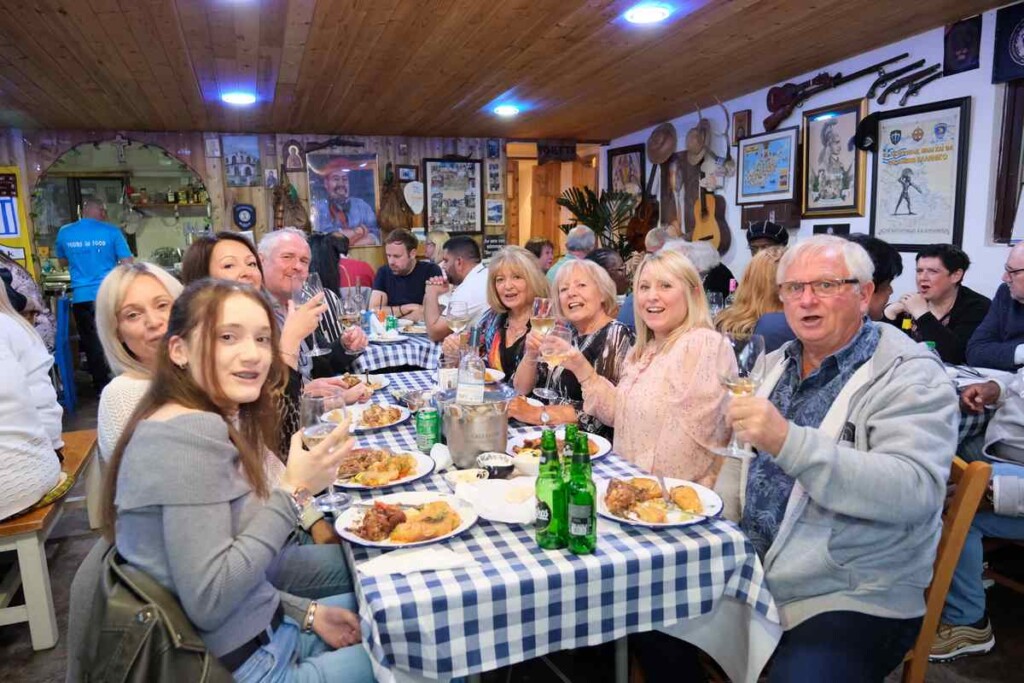
“He’d probably think I wasn’t cooking the food right, that he could do it better,” he told the British news agency SWNS laughingly. “But he would praise me, not to me, to others, but if he was here he would be the life of the party.”
MORE STORIES LIKE THIS: UK Restaurant is Letting People Pay-as-They-Can While Rescuing Tons of Food
The restaurant only serves up homemade, traditional food prepared by Michelle and a volunteer chef who works at a Marriott hotel as a day job.
Their signature dish is lamb klefiko marinated lamb and potatoes slow-cooked in the clay oven for 8-12 hours.
Desserts include a range of homemade traditional Greek delicatessens, including baklava, coconut cake, and Greek chocolate rock cake, called “Doukissa”.
ALSO CHECK OUT: Boy Who Started Food Bank in his Shed Now Opens Holiday ‘Gift Bank’ for Hundreds of Poor Kids
“I’m second generation Greek Cypriot, and my mom migrated here in 1974 with my father. They came here on a working holiday but they lost their home to the Turkish. At the start my mother was the driving force as well. She started us off with all the recipes and making sure the food is right. It’s completely traditional,” explains the garden restauranteur.
“My parents have embedded into us the power of giving back. I do it for six weeks every year. This year, the team has raised £16,500 to help a three-year-old boy with a brain tumor as well as other good causes. We also have an active foodbank which feeds people every week.”
“We have a rainy day fund. When a family needs something like a roof fixing or a microwave or who can’t afford it, they can apply to us. It’s an emergency fund.”
RESTAURANTS INSPIRED BY HERITAGE: Run by Grandmothers, a Staten Island Restaurant Highlights Homecooking from Around the World
“When we started we didn’t expect to be doing it for this long. I want to get to 20 years if we can and help a lot of people along the way,” he said in conclusion. “We believe in the power of food and heritage to bring people together and create a positive change.”
SHARE This Inspiring Story Of A Man’s Dedication To Heritage And Community…
Eagle Parents Spend Year Nursing Chick Who Fell Out of a Tree, Forsaking the New Nesting Season
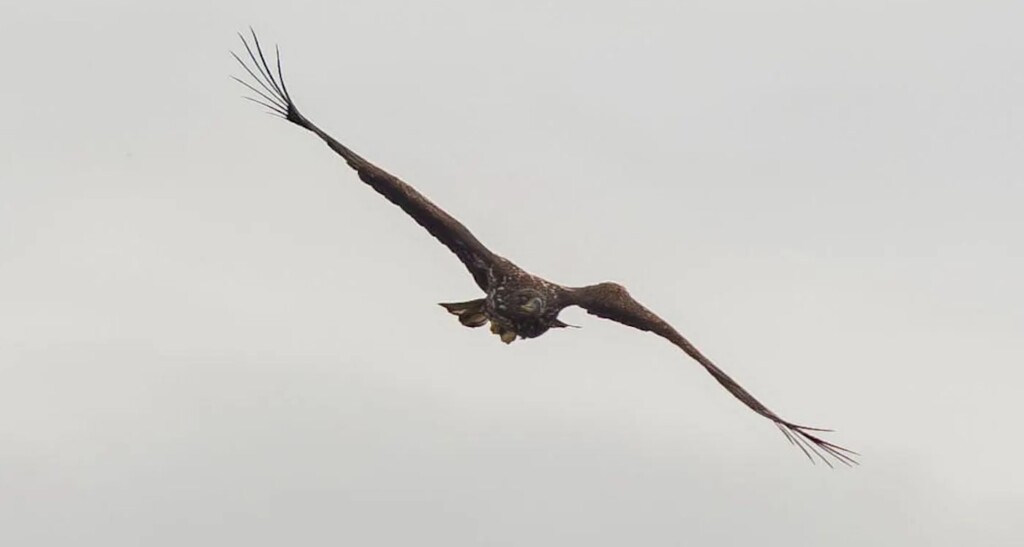
In what seems to be a never-before-seen phenomenon among the species, a white-tailed eagle couple has skipped this year’s breeding season in order to care for a juvenile who broke a wing.
Hatching in April, unseasonably wild weather blew an eaglet from its nest on the Isle of Mull during the July fledging season. Its mom and dad have spent 12 months nursing it back to health, even going as far as to skip the mating season.
Typically juveniles will leave the nests in October, but this bird is still with its parents, and no new eggs or chicks have been observed in the family.
Members of the Royal Society for the Protection of Birds in the UK, recently recorded a video of the “miracle” chick in flight, soaring on thermal updrafts without issue, even though its left wing was disfigured from the fall.
“We normally think of eagles as ‘hard-wired’ and unemotional but clearly there might be another side to their nature,” said RSPB officer Dave Sexton to the BBC. “I loved white-tailed eagles before. Now I think I love them just a little bit more.”
ALSO CHECK OUT: White-Tailed Eagle Breeds in Belgium for First Time in 500 Years
Sexton spotted this juvenile in springtime. Its mother and father were still bringing it fish, even though it was already almost fully grown. He said he has never seen or heard of anything like it before in the eagle world.
“I’ve also consulted with other eagle experts at home and abroad, and so far no one else has reported this kind of extended parenting behavior for an injured chick.”
KINDNESS AMONG KILLERS: Dog Insists On Saving Every Stranded Earthworm, Gently Lifting Them Onto the Grass
Last year, GNN disseminated the stunning saga from a nest cam video in Canada that captured a red-tailed hawklet being taken from its nest by a mother eagle to feed its eaglet. However, as the hours pass, neither parent nor offspring show any desire to eat the hawklet, and the family eventually adopts it.
SHARE This First Glimpse Of The Eagle’s Gentler Side…
Archaeologists Find Remarkable Marble Statue of Greek God Hermes in Ancient Sewer
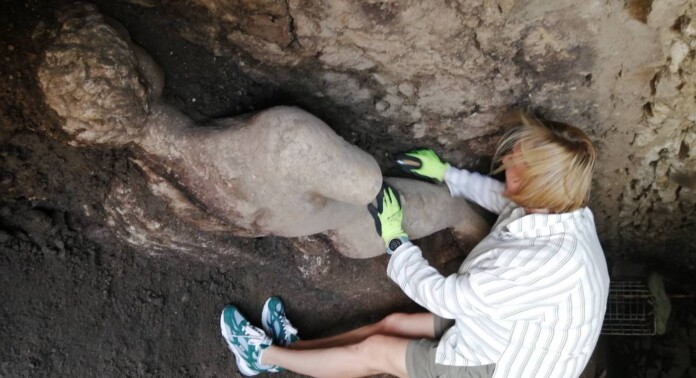
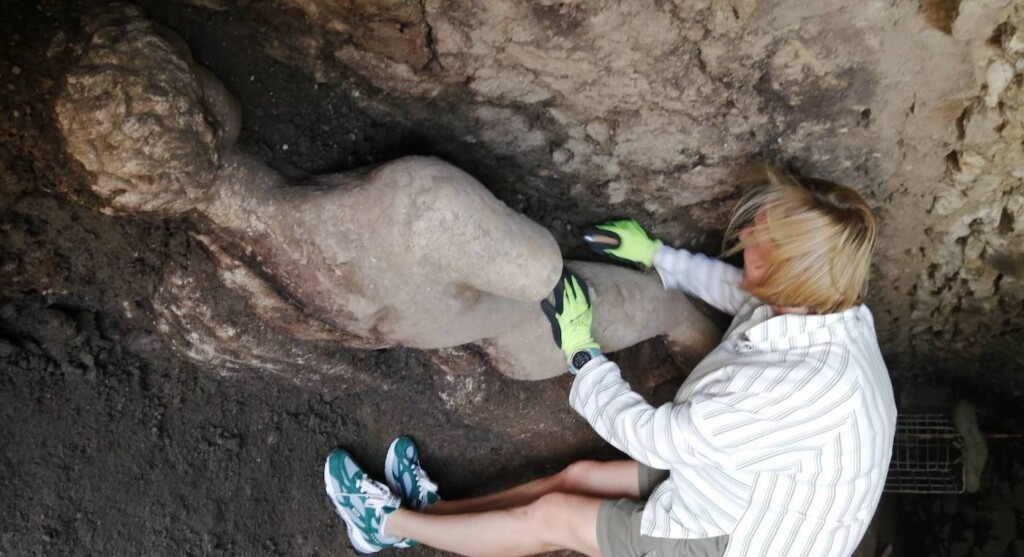
Bulgarian archaeologists undertaking routine excavations found something that was anything but routine in an ancient sewer system.
A pristine marble statue of the messenger god Hermes, perhaps buried to protect it from overzealous Christianized Romans, was located in the sewers of Heraclea Sintica, a lesser-known ancient site near the border with Greece.
The Greco-Bulgarian border region was the site of the Macedonian kingdom of Philip II and Alexander the Great, and it’s believed Philip II built Heraclea Sintica. The team of excavators said the statue is one of the finest ever found in Bulgaria.
“We found it by accident,” Lyudmil Vagalinski, the scientific director of the excavation, told the New York Times. “It was amazing. A whole statue appeared in front of us.”
Starting in 388 CE, the city was wracked by earthquakes repeatedly over several decades until the year 500 when it was completely abandoned in line with the gradual control of the area by nomadic tribes like the Bulgars and Huns.
Two hypotheses exist for why this costly statue would have been placed in the sewers. Either the residents thought it would be safer there from the earthquakes, or they were worried that, since the Romans were already a Christian nation, idols of pagan gods would be seized.
OTHER ARCHAEOLOGY NEWS: Extremely Elaborate 2,200-Year-old Tomb Discovered That May Have Belonged to a King–‘Most Complex Structure of its Kind’
“Everything pagan was forbidden,” Vagalinski tells Reuters. While residents of Heraclea Sintica may have “joined the new ideology,” they also appear to have “[taken] care of their old deities.”
Efforts are ongoing to remove the statue using a specialized hydraulic crane. Once under the light of day, the statue, whose head is entirely unscathed and which has only suffered damage around the lower arms, will be cleaned.
MORE STORIES FROM THIS PART OF THE WORLD: Palace of Alexander the Great Reopens After 16 Years of Renovations
“We still have a lot of work to do and I do not want to rush to conclusions, but from now on I can say that this ancient statue is not only the best preserved among the discovered here, but also on the territory of Bulgaria in general,” said Vagalinski, this time in a statement on social media.
The statue is set to go on display at the History Museum in Petrich.
SHARE This Story About An Unlikely Find For A Sewer With Your Friends…
“We must build dikes of courage to hold back the flood of fear.” – Martin Luther King, Jr.
Quote of the Day: “We must build dikes of courage to hold back the flood of fear.” – Martin Luther King, Jr.
Photo by: Hudson Hintze
With a new inspirational quote every day, atop the perfect photo—collected and archived on our Quote of the Day page—why not bookmark GNN.org for a daily uplift?

Good News in History, July 12
129 years ago, the architect, visionary, and writer Buckminster Fuller was born. Fuller developed numerous inventions, mainly architectural designs, and popularized the widely known geodesic dome structural shape, which he most famously used to design the Montreal Biosphere. Soaking with honors, awards, and appointments, Fuller published 30 books in his life, invented numerous words, and held 28 US patents. READ some details about the great inventor… (1895)
‘Meadowmaker’ Flowers Herald Return of Rare Bumblebee in England After Scenic Meadows Restored
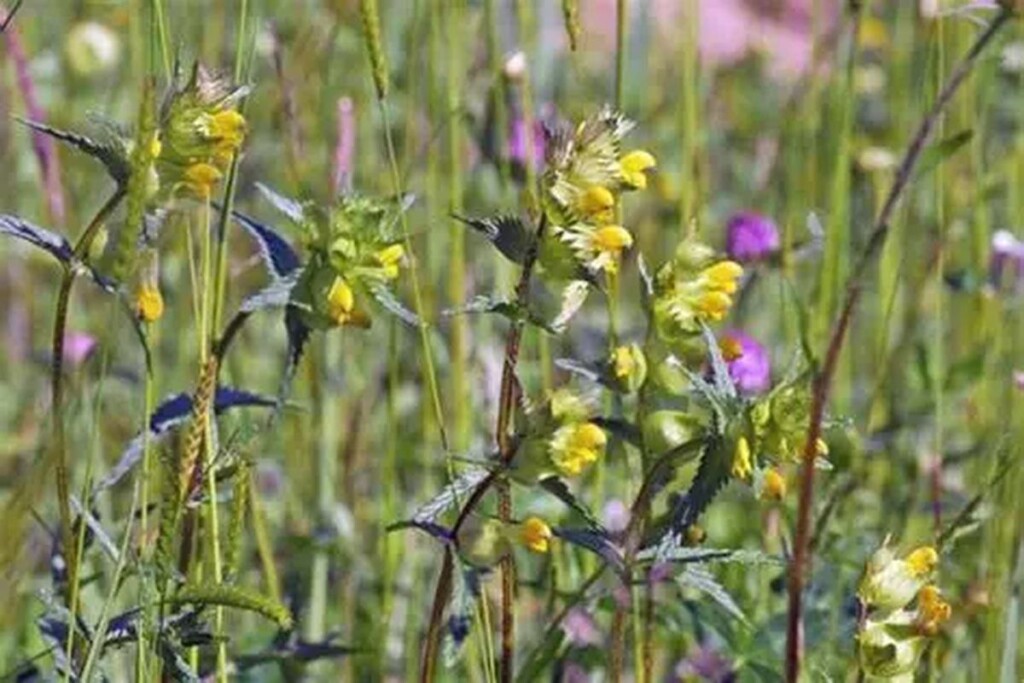
In west England, a series of hills cloaked in heather and wildflowers are the target of a national restoration project that is already seeing success.
Similar to the story GNN reported on last week about the rewilding along the south coast and South Downs National Park, Sussex, volunteers are seeding old hay fields with native wildflowers and replanting traditional hedgerows to ensure wildlife can move freely through the region.
The region is called the Shropshire Hills, which by British law is designated an Area of Outstanding Natural Beauty, and is managed and controlled so this beauty can endure. But while the area is indeed beautiful, the valley between the sections of hills known as Long Mynd and Stiperstones has for decades been under heavy hay cultivation, with farmers plowing up meadows and planting fast-growing commodity grasses.
As part of a project by the UK’s National Trust called Stepping Stones, volunteers have been working with landowners and local councils to turn some of these meadows back over to the wildlife, creating corridors of habitat to allow species like the bilberry bumblebee, pine marten, and curlews to move freely from hilltop to valley floor and back to hilltop.
Charlie Bell, project manager for Stepping Stones, told the BBC that the project is one part of an overall mission that aims to restore 97% of meadows that have been lost in the UK over the last 100 years.
MORE BRITISH RESTORATION: An Unloved English Field Restored to Beautiful Brook as Part of a Large Project to Glorify the River Ise
“Many old meadows have been plowed up and re-seeded with more productive mixes of grasses,” she told the national broadcaster. “Fertilizers are often added to increase the growth of these dominant productive grasses, at the expense of finer grass species and wildflowers.”
Jinlye Meadows, on the Long Mynd side of the valley, is now thriving with native wildflower species like mountain pansy, and volunteers have recorded the area is thriving with bilberry bumblebees which are rare and in decline.
YOU MAY ALSO LIKE: ‘The Largest Environmental Restoration in History’ Continues to Restart the Heart of the Everglades
In particular, the meadows were covered last year in yellow rattle, also known as the “meadowmaker,” a key part of Ms. Bell’s strategy for restoring meadows. This native species attaches itself to the roots of grasses, slowing, but not sabotaging, their growth. This allows not only the flower to grow, but space for all manner of other flowers to grow as the grasses’ growth is retarded.
WATCH a video of the project from the National Trust…
SHARE This Beautiful Area Beautified With Your Friends From The Midlands…
Four Frugal Methods to Cool Down Without A/C This Summer

Depending on where you live, air conditioning in summertime is a luxury or a necessity. Depending on the size of your bank account and the price of elecriticy in your county, however, that necessity may run the risk of becoming a luxury.
Fortunately, humans have been cooling their domiciles for as long as they have been building them, and sometimes it can cost nothing.
By exploiting physics and the cardinal elements, most people can cool their house down reliably without A/C, it just requires a bit of observation. For example—observe the path of the Sun throughout the day.
1: Shielding from the Sun
Where are the rays falling during the hottest hours of the day? As the USA lies in the Northern Hemisphere, the Sun travels across the southern sky, and so for most homeowners or tenants, its rays will beat down on the southeastern, southern, and southwestern flanks of your house.
As it arrives at a window, close the shutters—or buy a set of blackout curtains to repel the heat from entering through the window. If one is really desperate, curtains—or even a blanket or rug—will work better hung outside the window on the exterior of the house.
After the Sun’s rays have completely left a window, that’s the moment to open it.
2: Master the art of airflow
Keep a flag outside your house and observe the direction of the wind when it blows. Opening windows on opposite ends of your house will create an airflow that, when moving through the narrow confines of the window openings, causes the flow to accelerate and cool down, like the way rivers speed up when channeled into a more narrow section.
Most people know that hot air rises, but it doesn’t always follow for them to deduce that this means cold air sinks. As such, positioning yourself at lower levels, both micro and macro, can help a lot.
Consider moving your bed to the basement. This is what desert dwellers have done for millennia—sleeping below the level of the earth to stay cool. One can also consider removing the boxspring and frame and placing their mattress directly on the floor. The closer one’s body is to the ‘bottom’ of whatever, whether that’s a house or a room, the cooler it will be.
Investing in a reversible fan is a good idea for mastering airflow. If there’s a source of hot air in the room, the fan can blow it out of a window or up a flight of stairs, inviting cooler air to fill the room. Likewise, if there’s a source of cooler air, a fan can pull it up from a basement, or in from the outside after dark.
3: Using water
Water can be used to cool oneself and the room in various ways. A bowl of ice, when placed on a stool in front of a fan, cools the air blown out into the room. Likewise, if there is a breeze or air coming in through a window, a wet towel suspended across it will cool the air further as it enters.
If one can’t handle a cold shower, one can easily apply wet towels to any part of the body that’s significantly hot. Around the neck, or between the thighs are good places for cold towels because blood flow passes through major arteries. Ice packs would work just as well.
Combining these methods with a fan is a surefire way to cool down whilst trying to sleep. Also it’s obviously important to stay hydrated, as a lack of available water in the body will impede one’s natural cooling systems.
4: Understanding heat
Heat is generated in many ways throughout the day and throughout the house. For starters, our bodies generate heat through excessive movement, digestion, and other activities.
No one is recommending you do a water fast (though that would keep you generally cooler probably) but eating a lighter dinner, or perhaps even splitting dinner into two separate meals, will avoid too much metabolic heat being generated through digestion.
On the subject of food—think salads and sandwiches, since stoves and ovens saturated the air with heat. A more clever alternative is to cook with crock pots or slow cookers, or even running an appliance like a rice steamer or air fryer outside.
When running at full capacity, computers generate a serious amount of heat—so keep the PC or laptop running at less than half memory speed. You can accomplish this by closing programs you’re not using, and keeping the number of tabs and browser windows to a minimum.
SHARE This Sweat-Saving Tips With Your Friends Who Can’t Stand The Heat…
Tiny ‘Frog Saunas’ Help Endangered Amphibians Fight off Fungal Disease
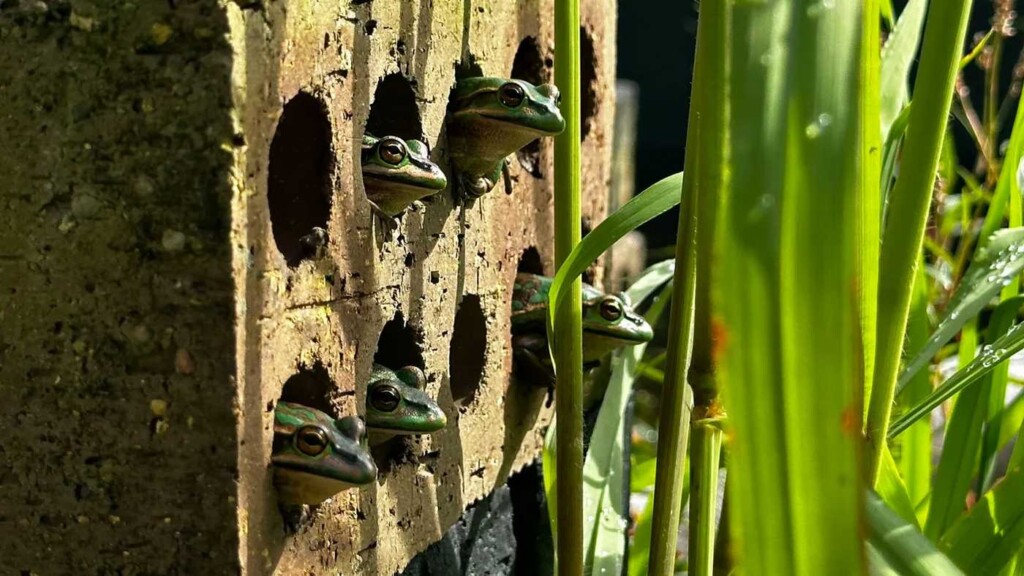
In humans, sauna use is so beneficial that some medical researchers are attempting to add it to the standard of care for those at high risk of heart disease.
Well, researchers in Australia have found that this same leisure activity can save certain species of frogs from the ongoing fungal pandemic called chytrid.
GNN has already reported on chytrid and the ways in which it can be combated. Documented as having infected 500 species of frog or more, it’s a massive threat to the amphibiome.
Anthony Waddle at Macquarie University in Australia built a series of “frog saunas” to see if they could help golden bell frogs and green bell frogs native to Australia recover from chytrid. The fungal pathogen thrives in cooler tropical temperatures, and is unviable above 84°F (29°C).
Consisting of unshaded black brick structures with narrow holes inside an artificial greenhouse habitat with water and plants, the frogs quickly made themselves right at home inside the saunas.
Four healthy frogs were used as control for a study group of eight frogs, half of whom were infected with chytrid. Some of the habitats were shaded, and others were left uncovered to test a range of temperatures. Infected frogs who frequented the unshaded structure, where temperatures could climb as high as 97 to 100°F, had milder infections, but access to any sauna helped the frogs fight off the disease.
Once they recovered via the saunas, the bell frogs were 23 times less likely to die in the case of a repeat infection with chytrid.
ALSO CHECK OUT: Village Saves 45,000 Toads From Roadway Deaths Cutting Casualties By 60%—All the Way Down to 3% Rate
Bell frogs “used to live in people’s toilets and letterboxes and everywhere before chytrid,” Waddle told Science News. “Setting up these habitats where they still persist might give them enough of a boost that you could see a population increase.”
Building these simple structures in a garden could help frogs not only survive chytrid outbreaks, but also help the local population to develop resistance.
MORE ON THIS TOPIC: 32 Species of Harlequin Frogs Were Found in Ecuador That We Thought Were Extinct
Not all frog species enjoy a nice roasting, however, so the saunas are limited in their scope to warm-weather species. For those who enjoy cooler temps, another solution needs to be found.
SHARE This Adorable Remedy For Suffering Australian Frogs On Social Media…
Hobbyist Restores Steam Locomotive to Pristine Condition–Puffs Down the Tracks for the First Time in 44 Years

It’s easy to be romantic about trains, but that typically doesn’t grow into a hobby, at least for everyone other than Iain Smith from Aviemore in the Scottish Highlands.
Smith and a small group of volunteers have spent the last quarter-century restoring this Ivatt Class 2 2-6-0 engine—serial no. 46464—to working order, and after years of elbow grease and weekend tinkering, they finally got to watch it huff and puff down the tracks.
No. 46464, known affectionately as “Carmyllie Pilot” was built 75 years ago and spent the majority of its working life carrying passengers between Angus and Fife, a journey of about 90 minutes.
“It was very emotional to see it up and running again,” Smith admitted.
Carmyllie Pilot carried freight and passengers around Scotland for 14 years until it was withdrawn from service in 1966.
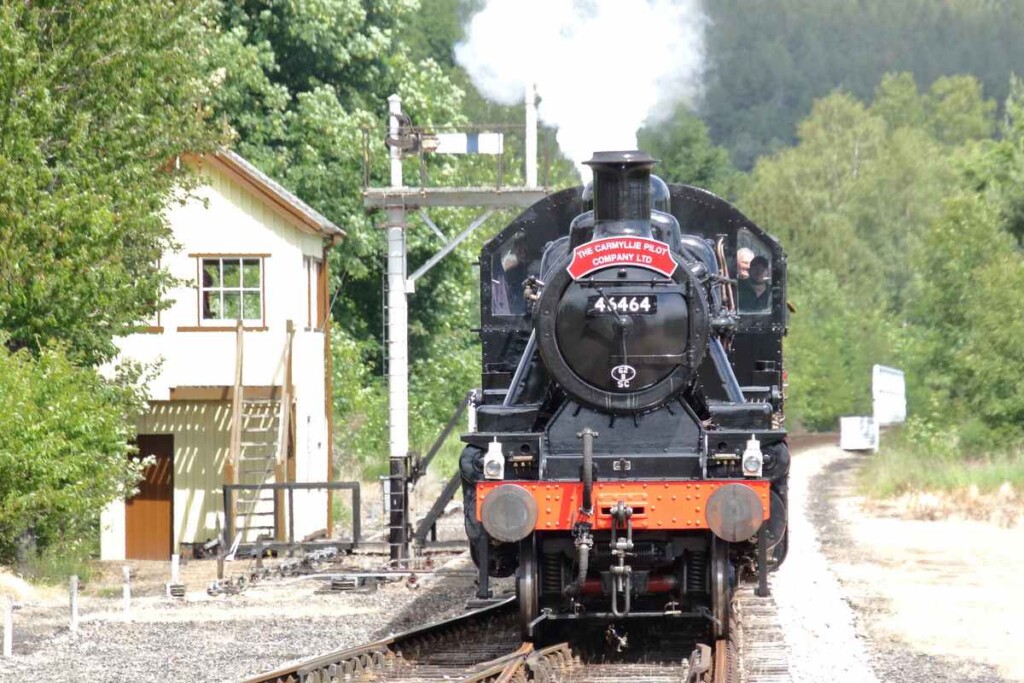
A former London North Eastern Railway railway engineer Ian Fraser bought the locomotive after getting to know one of the former drivers. As a retirement gig, the locomotive was added to a railway museum in Dundee, and then sent to Aviemore’s Strathspey Railway where it operated on a heritage line.
Eventually, a problem put it out of action and it returned to Fraser’s ownership in 1989.
FOR THE ONE WHO LOVES TRAINS: Wes Anderson Designed a Luxury Train Car – and It Looks Like Something Out of His Movies
14 years later, Mr. Fraser died, but in 2000 the volunteer-led Carmyllie Pilot Company Ltd was formed with the intention of fully restoring the locomotive. Much of the work was done at Strathspey, where it sat alongside other heritage locomotives.
Receiving a coat of paint according to its original livery, it now lives again, relying on dozens of parts that were custom-made because replacements were impossible to find.
MORE RESTORATIONS: Maui Jewelry Store Restores Jewelry Damaged by Wildfires for Free
“It was like a giant Meccano kit at our site at one time,” Smith told the BBC, comparing it to a popular toy brand.
SHARE This Incredible Garage Project With Your Friends Who Love Trains…
“Friendship is the breathing rose, with sweets in every fold.” – Oliver Wendell Holmes, Sr.
Quote of the Day: “Friendship is the breathing rose, with sweets in every fold.” – Oliver Wendell Holmes, Sr.
Photo by: Tiffany Chan
With a new inspirational quote every day, atop the perfect photo—collected and archived on our Quote of the Day page—why not bookmark GNN.org for a daily uplift?

Good News in History, July 11
88 years ago today, The RFK Bridge, also known as the Triborough Bridge, opened to traffic in New York City. Together, the series of bridges and viaducts span over 5,000 feet and link the boroughs of Manhattan, Queens, and the Bronx. The first section of the complex passes over the Harlem River, and is the largest vertical-lift bridge in the world, while the second section connects Randalls Island with the Bronx, and the third connects Wards Island to Astoria in Queens over the East River. READ how they were built… (1938)
Michael Bloomberg Donates $1 Billion to Provide Free Tuition for Future Doctors at Johns Hopkins
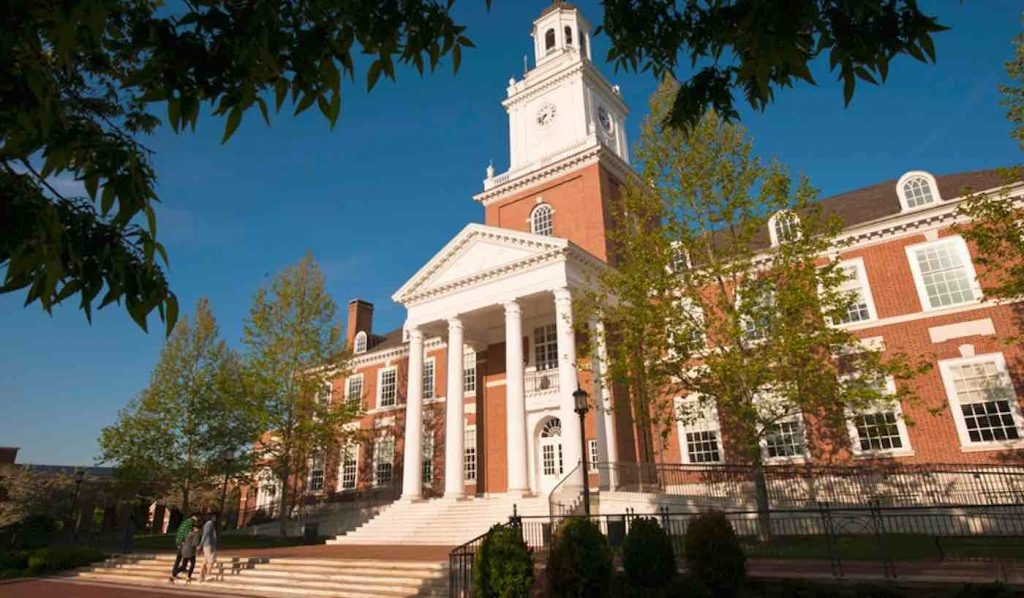
Bloomberg Philanthropies announced Monday a new $1 billion gift to make medical school free at Johns Hopkins University for a majority of students, while also increasing financial aid for students at its schools of nursing and public health.
The announcement was made in Michael R. Bloomberg’s (JHU ’64) annual letter on philanthropy in the Bloomberg Philanthropies 2023-2024 Annual Report released today.
Currently, nearly two-thirds of all students seeking an M.D. from Johns Hopkins qualify for financial aid, and future doctors graduate from Hopkins with an average total student loan debt of approximately $104,000.
Beginning in the fall of 2024, Johns Hopkins will offer free tuition for medical students coming from families earning less than $300,000 a year, which represents about 95% of all Americans. On top of tuition, Johns Hopkins will cover living expenses and fees for students from families who earn less than $175,000 a year.
“As the U.S. struggles to recover from a disturbing decline in life expectancy, our country faces a serious shortage of doctors, nurses, and public health professionals—and yet, the high cost of medical, nursing, and graduate school too often bars students from enrolling,” said Mr. Bloomberg.
“By reducing the financial barriers to these essential fields, we can free more students to pursue careers they’re passionate about—and enable them to serve more of the families and communities who need them the most.”
By the foundation’s reckoning, the gift will bring the average student loan debt for the Johns Hopkins School of Medicine down to $60,279 by 2029 while students from the vast majority of American families will pay nothing at all. This new gift ensures the most talented aspiring doctors representing the broadest range of socio-economic backgrounds will have the opportunity to graduate debt-free from Johns Hopkins.
And to further address recent declines in U.S. health, the gift will increase financial aid for students at its School of Nursing and the Bloomberg School of Public Health.
The gift will also increase financial aid for low and middle-income students pursuing graduate degrees at Johns Hopkins’ School of Education, Whiting School of Engineering, Carey School of Business, School of Advanced International Studies, Krieger School of Arts and Sciences, Peabody Institute, and the upcoming School of Government and Policy. This generous aid will help Johns Hopkins attract more of the nation’s brightest students to pursue the fields that most inspire them, rather than ones that will best enable them to repay graduate school loans.
MORE BILLIONAIRE PHILANTHROPISTS: Patagonia Gives Away Its Entire $3 Billion Worth To Fight Climate Change
This is the second of two 10-figure donations from Bloomberg Philanthropies to Johns Hopkins, having already contributed a historic $1.8 billion to Johns Hopkins in 2018 to try and ensure that undergraduate students are accepted regardless of their family’s income, permanently establishing need-blind admissions.
“That gift lowered the net cost of attendance—the actual cost that most families pay—by 40% and had a transformative impact on the makeup of the Johns Hopkins student body. Students with the greatest financial need now represent 21% of the Johns Hopkins student body, compared with 9% a decade ago, a higher percentage of high-need students than there is at Harvard, Princeton, MIT, and nearly every other Ivy League and Ivy League-adjacent institution,” the foundation claimed in a statement on the $1 billion gift.
LARGE GIFTS FOR OUR FUTURE DOCTORS: New York Medical School Surprises Students with Free Tuition in Perpetuity After $1Billion Gift–WATCH
“As Johns Hopkins has become more economically diverse, it has also become more selective, attracting and enrolling more of the nation’s top students, including many from lower-income families who might not have applied before.”
Last year, the former mayor of New York donated over $3 billion to charity, making him one of the most prolific American philanthropists that year.
SHARE This Great Demonstration Of American Philanthropy With Your Friends…
Hi-Tech Whiskers Give Working Robots More Ability to Move Safely and Read Environment
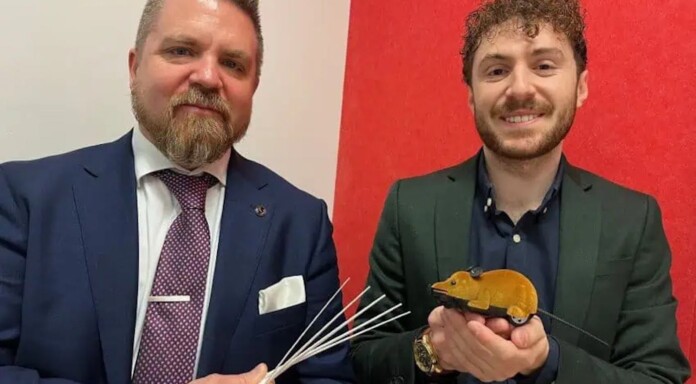
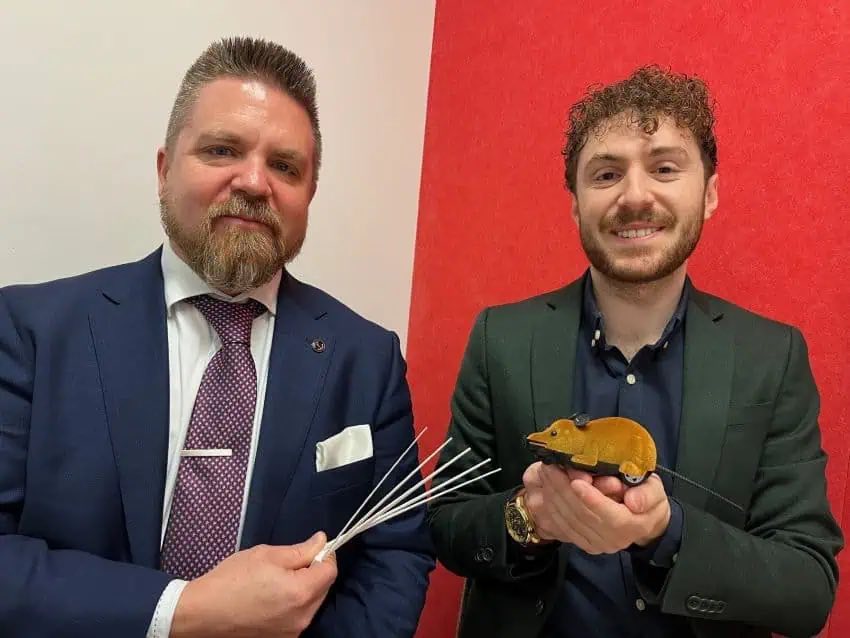
While current autonomous robots utilize rangefinders, cameras, and lasers to navigate, the addition of whiskers could be a cheap addition that prevents some seriously expensive collisions.
Whiskers aren’t only wielded by cats and mice—hundreds of mammals have them, including all non-human primates, and many marine mammals like dugongs and seals.
This biological diffusion can mean only one thing—that whiskers are very useful; and indeed they are, allowing animals who have them to move quietly and better sense the surrounding environment.
Australian engineers have presented a set of 3D-printed whiskers that should allow robots to glean better information about their surroundings, particularly in blind spots, or to assess the weight, shape, and kind of object in their path.
Co-inventor Dr. Russell Brinkworth, Associate Professor in Autonomous Systems at Flinders University, focuses on bringing robots out of the lab and into the real world, and said that he and his team would like to see these whiskers function in a way similar to how our fingertips work.
“These 3D printed sensor whiskers could be fitted at low cost and give robots many useful additional capacities,” he told Cosmos Magazine.
“Every space is different, so giving robots effective tactile sensor systems to map their tasks and ‘visualize’ movement in their range will advance their abilities,” adds Simon Pegoli, a Ph.D. candidate at Flinders University, and lead author on a paper published in Sensors and Actuators A: Physical.
INSPIRATION FROM NATURE: Robot Mimics Human Sense of Touch to Better Sort Through Litter
Using mechanical beam theory, the pair has optimized the whisker shape and attachment mechanism that should keep costs low and utility high. Long and flexible, the whiskers would offer robots working in cluttered spaces like a warehouse receiving or shipping station an invaluable means of detecting the weight and hardness of objects they collide with, as well as potentially preventing a collision in the first place.
As the science of robotics expands and diversifies, animals and their adaptations are routinely used as examples of clever engineering and problem-solving.
MORE ROBOTIC ADVANCES: Italian-Made Exoskeleton Gets Disabled Users Walking and Standing
Previous robots reported on by GNN include a pangolin-inspired rolling robot to deliver medical supplies, a spiraling off-world rover inspired by snakes, and pollinating fairy robots inspired by wind-blown seeds from plants like dandelions.
SHARE This Great Idea To Improve Robots With You Friends…
Contest Winner Turns Bridge into the Longest Walking Art Gallery in South Korea

The metropolitan government of Seoul, South Korea, has just concluded a contest to redesign the lower deck of a famous city bridge, awarding first prize to a Dutch firm that wants to turn it into an art gallery and cultural space.
Firm Arch Mist provided the most “innovative” proposal for remodeling the semi-submersible Jamsu pedestrian bridge over the Han River, with their vision of fushia metal ribbons winding between the piles of the bridge structure.
The design will offer multiple balconies and decks for the hosting of art displays and cultural events without impeding pedestrian flow.
The bridge is already a famous sight in the city—with the upper deck, called the Banpo Bridge, holding the Guinness World Record for being the longest “fountain bridge.”
It has 38 water pumps and 380 nozzles installed. It also has speakers, lights, and projectors that make it a marvel to see at night.
Arch Mist’s 8,650m2 project will transform the 795 meter-long Jamsu Bridge into the ‘longest art gallery’ that will benefit from the shade and rain cover of the Banpo Bridge above.
“We have put lots of efforts into this project, since the beginning of this competition, and we are determined to see through to the end in order to create a ‘bridge of culture’ that citizens can enjoy,” said Chang-Soo Lim, Seoul Metropolitan Government’s Future Space Planning Officer. “It will also be the first pedestrian bridge and the first waterfront cultural space over the Han River.”

Built in 1979, the Jamsu Bridge occasionally floods, but for decades it has also hosted events including food trucks and shows, weather permitting.
MORE BEAUTIFUL BRIDGES: ‘Rolling Bridge’ Designed So Anyone Can Use Hand Crank to Lift Multi-Ton Footpath for Boats
It was eventually arched in the middle to allow boat traffic to pass underneath, and now combined with the fountain and light show, promises to be a center of attention in the glittering metropolis of 10 million people.
SHARE This Awesome Idea With Your Friends Who’ve Visited Seoul…
Pick Up Litter and Get Free Stuff in Copenhagen This Summer Through Eco-Conscious Rewards Program
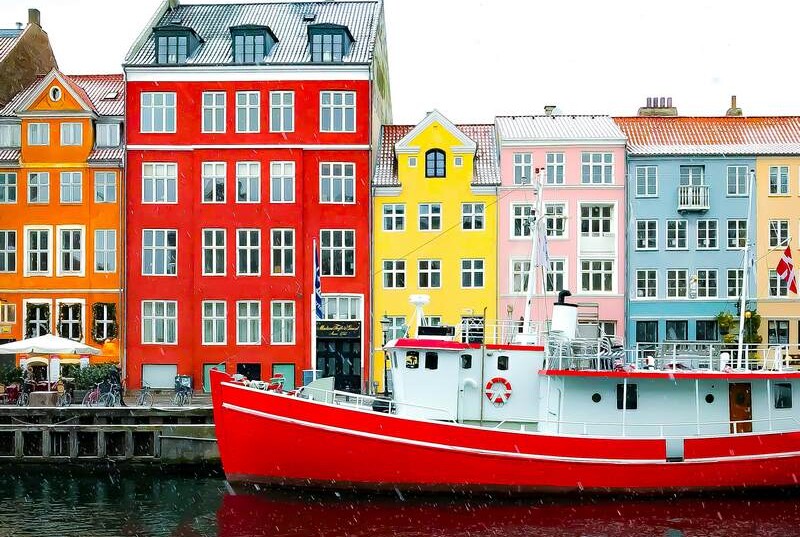
There’s never been a better time to plan a summer vacation in Copenhagen. 2024 is set to be the largest tourist season on record, with people flooding to popular destinations in Italy, France, and Spain in such numbers that city governments are raising tourist taxes, and even discouraging visitors with strict controls on behavior, tour group sizes, and rental property numbers.
By contrast, Copenhagen, the capital of Denmark, has launched a program whereby visitors this summer can earn credits for public transport, attraction entrances, and more by picking up litter, using zero-emissions transport, or doing short volunteer stints.
Rather than penalizing bad behavior, Copenhagen wants to invite good behavior by instilling in visitors the values and habits that make Copenhagen one of the most environmentally sustainable European capitals.
Earn rewards at Copenhagen attractions ranging from a free lunch or a cup of coffee to a kayak tour or even a free entrance to a museum by participating in several sustainable activities, including biking or taking zero-emissions public transport instead of driving, picking up litter, or “pledging sustainable behavior.”
Companies will not be reimbursed under the plan, but the green-eyed Danes are still signing up to participate, with 2 dozen firms involved in tourism and hospitality opting into the program, which city planners say will be “trust-based.”
YOU MAY ALSO APPRECIATE: Kyoto Passes Law to Protect Traditional Geisha From the Obnoxious Tourist ‘Paparazzi’
At the moment, the program, called CopenPay is running on a trial basis for a month starting July 12th, and a GPS map of the city with all the restaurants, services, and attractions that accept these eco-credits highlighted with address pins, which also include what you must do to earn them, as available on the website.
The program will run until August 11th, and the tourist board’s communications chief, Rikke Holm Petersen, is excited to see the results.
MORE TOURISM STORIES: ‘Give Nature Space and it Will Come Back’: Rewilding Returns Endangered Species to UK Coast
“Imagine if we could have people taking a greener mindset back with them – if that was the souvenir they got – that would be amazing,” Ms. Petersen told the BBC.
SHARE This Unique Method Of Exploring The City With Your Friends…
“People only see what they are prepared to see.” – Ralph Waldo Emerson
Quote of the Day: “People only see what they are prepared to see.” – Ralph Waldo Emerson
Photo by: Deva Darshan
With a new inspirational quote every day, atop the perfect photo—collected and archived on our Quote of the Day page—why not bookmark GNN.org for a daily uplift?

Good News in History, July 10
6 years ago today, a group of teenage association football players and their teacher were successfully rescued after being stuck for over two weeks in Tham Luang Cave, Thailand. Entering the cave after a practice session, heavy rains later trapped the team inside. Efforts to locate the group were hampered by rising water levels and strong currents, and the team was out of contact with the outside world for more than a week, during which their plight grew into a worldwide media frenzy. READ how they were saved… (2018)
She Rescues Wild Mustangs That Are Rounded-Up and Reunites Their Herds on Her Ranch
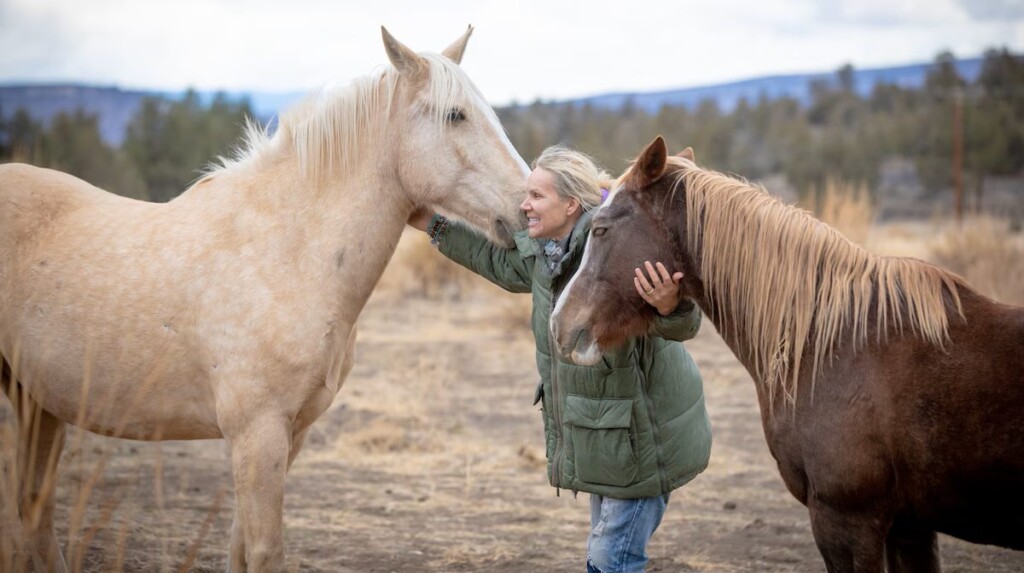
A former Hollywood producer turned rancher is rescuing mustangs and wild donkeys from being sold at auction to potentially abusive environments or slaughterhouses.
Clare Staples is her name, and when she first became aware that the West’s wild mustangs are rounded up by the Bureau of Land Management and sold at auction, she realized this meant that horse families were being separated against their will.
Already having passed 50 and looking for a purpose-driven mission in her life, she founded Skydog Ranch and Sanctuary intending to provide 9,000 acres of grazing land where mustangs and wild donkeys, called burros, can roam in familial peace for the rest of their days.
In media interviews, Staples has likened the work to that of the detective. Horses across 10 western states are gathered in the annual “round-up”—a vast capture operation of wild horses and burros to keep their numbers down. Often this means a mare and her foal living in Arizona might be separated, with the foal sold in Oregon, and the mare sold in Nevada, or something similar.
Staples uses a network of photographers to track members of families, and even herds, and use the money made through their nonprofit operations to buy them at BLM auctions to the end that they’re reunited at her ranch.
“It’s kind of like being a wild horse detective. We rely on the photographers who go out into the wild,” Staples told KOIN 6 News. “There are certain herds, especially in Oregon, where people name horses and they become well known on these Facebook pages.”
The round-up has been going on for decades and inspires controversy in every state where it takes place. Proponents of the round-up say that wild mustangs and burros are non-native, invasive species that negatively alter the landscape for sensitive, native species. Opponents argue that the origins of the round-up come from ranching interests, whose herds of cattle—which far outnumber the populations of wild mustangs and burros—compete with these animals for grazing space.
It’s true that the ancestors of horses went extinct on the North American continent tens of thousands of years ago, and that the current post-glacial ecosystems never evolved with their presence. It’s also true that in many states there are no predators to keep their numbers under control, and so the round-up simulates the predation rate of an ecosystem where predators would be hunting them.
WILD HORSES AROUND THE WORLD: Wild Horses Return to Kazakhstan Plains After Two Centuries of Absence
Yet it’s also true that the presence of ranched cattle on the same BLM land where mustangs and burrows live is orders of magnitude greater and more disruptive than that of the equines.
As she would like to see it
Taking matters into her own hands rather than relying on the government, Staples created a little slice of the West as she would like to see it—dotted with herds of these charismatic beasts who are able to live in peace.
So far, Staples has welcomed around 260 mustangs and 60 burrows onto her property, many of which took months of detective work to identify.
HORSE HEROES: Willie Nelson Has Rescued 70 Horses Destined for the Slaughterhouse, So They Can Roam Free On His Farm
“If you’re looking for a horse with a tiny white patch over its left eye, Clare will do everything she can to find that horse using photographic documentation,” said Scott Wilson, a photographer whose work allows Staples to track down members of horse herds that were separated during the round-up.
Though she firmly opposes the round-up, she sometimes relies on the BLM employees to point her in the direction of paired horses, like the mother and daughter in the video below.
“They were rounded up from Green Mountain Wyoming, and it was the corrals at Rock Springs who asked us to take them as they noticed how bonded and wild they were and didn’t want them separated,” the organization explains.
“Wild horses have such deep bonds,” Staples told the Washington Post. “Who are we as humans to think we’re the only species that cares about their family?”
SHARE This Beautiful, Inspiring Mission And The Dedicated Woman Leading It…





















